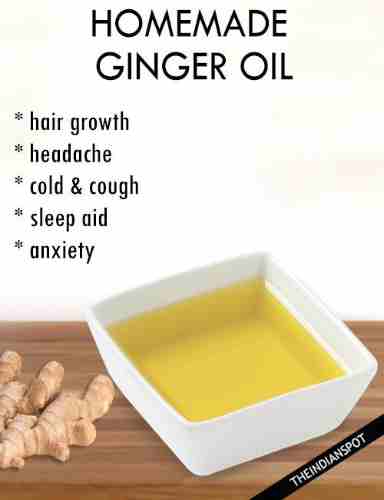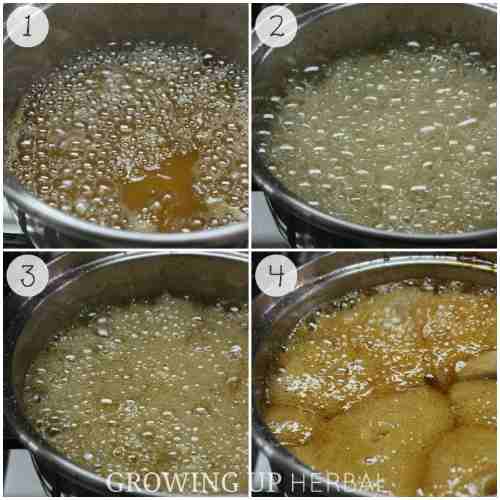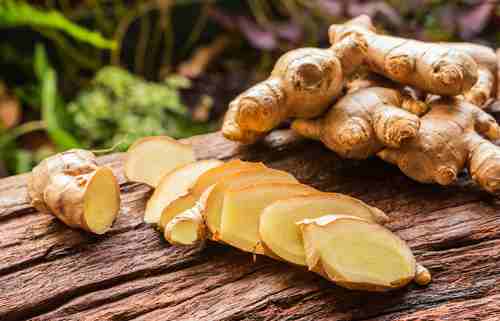When it involves relieving joint aches, one of the wonderful solutions for combating the worrying aches also can already be in your kitchen.
Aromatherapy—used for many years—is a safe, effective, and science-subsidized vicinity to start earlier than going straight away to the extra hard stuff at your medical health practitioner’s workplace.
While there are a handful of all-celeb options, one of the extremely good is none aside from ginger oil, which has been proven to help reduce knee pain, continual low yet again aches, arthritis, and beyond because of its anti-inflammatory houses, absolutely via massaging it into the skin.
How to make ginger oil at home for hair growth, pores and skin and cooking
Ginger oil is a fairly spiced-scented oil extracted from ginger root, the part of the plant wherein the oil is extracted is referred to as the rhizome.

This oil may be extracted from dried ginger, ginger powder, or smooth ginger root.
Homemade ginger oil
With its anti-inflammatory, anti-bacterial and numerous specific recovery homes, ginger’s medicinal prowess has been widely recognized for years.
Transforming the glowing root into an infused oil – or ‘liquid gold’ as I call it – isn’t only truly clean and less expensive than shopping for it ready-made. Still, ginger’s versatility as a culinary element and a natural remedy will also boom.

How to make ginger oil at domestic
- Rinse your glowing natural ginger roots under strolling water and pat them dry
- Using a cheese grater or a small grater, grate the easy ginger into tiny quantities
- Once carried out, transfer the grated ginger properly into a medium jar or bowl
- Add your employer’s oil to the grated ginger and submerge it in the oil. Your issuer oil maybe olive oil or coconut oil.
- Cover the jar and leave it to rest in a heat nook for three days. You will want to supply the jar with a touchy shake as it stays.
- At the end of the three days, open the ginger oil and pour it over a filter to do away with the ginger pulp.
- Store the extracted oil right in a garage bottle.
Heat Method
After blending the ginger with the provider oil as defined before:

- Place the oil and natural cloth combination in a bowl and nest it in a saucepan 1/2 of the whole water over minimum warmth. The bowl needs to be in shape tightly in the saucepan. However, it should no longer contact the water. This is called a double boiler.
- Let the mixture simmer at a minimally warm temperature for 4 to eight hours. Use a kitchen thermometer to be sure the oil is continuously below 110F (43C). Also, make certain that the water would not evaporate clearly. Do no longer go away the steerage unattended.
- After enough time, please remove the infused ginger oil from the heat and let it cool. While heated, stress the aggregate described in step four above and preserve the oil in a smooth, dry jar.
- Both of the above-described strategies may be finished even by combining ginger root with different herbs that display comparable homes, along with ginseng and chamomile. Ginger oil made in this manner can close for 2 to 3 years whilst stored refrigerated.
How to Make Ginger Oil
You could use every clean or dried ginger root to reap the advantages of ginger oil. The maximum famous techniques for creating ginger oil are maceration and heating. The number one approach may often be discovered via the latter's usage.

Ingredients
- 2 cups very thinly sliced ginger root
- Three cups coconut oil melted
Drying the Ginger:
- If you make an effort to dehydrate ginger, make lots.
- You can store it in a jar or use it to make tea. Grind it right into a powder to apply in cooking… it’s so extremely good to have freshly dried ginger in the pantry
- I peel my ginger. Out of habit, however, I’m searching to surrender. It’s tough, so it’s as awesome a deal as you. I use a spoon to peel off the pores and skin.
- Slice the ginger lightly, first-rate and skinny, in reality, so it dehydrates faster.
- Oven or dehydrator? Use what you have got, but I will say the dehydrator is my top-favoured kitchen tool!
- Dehydrator: one hundred twenty F – the type of 4 hours
- Oven: lowest putting, go away the door cracked open. Keep an eye on it!

Making the Infusion:
Once the ginger is dry, mix it properly right into a powder.
Why powder it? It will make a more potent oil, breaking down the plant’s cellular walls to launch the components.
Weigh out 1 ounce of ginger powder through weight.
If you’re making natural recipes, getting a weighing scale is a remarkable idea. This one is $10
Pour the ginger powder into a jar. And then fill the jar with 7 oz.. (via amount) of oil.
Blend well and cowl with the lid.
Directions

- Lay ginger slices out for your dehydrator tray. Dry consistent with the producer’s instructions, rotating each 20 to a half-hour until crisp and aromatic, approximately 2 hours.
- Break up dried ginger into smaller portions; transfer to a saucepan. Add coconut oil; warm lightly over low warmth until herbal oils from ginger infuse the oil for at least 2 hours.
- Strain ginger oil via a filter to get rid of huge quantities. Wrap cheesecloth over the top of a pitcher jar. Pour ginger oil thru cheesecloth into the jar to strain all over again.
Medicinal Properties of Ginger Oil
Ginger oil is a smooth way to consume ginger and is used medicinally to help with the following situation
- Indigestion
- Diarrhea
- Flatulence (gasoline)
- Nausea
- Joint and Muscle Pain
- Morning Sickness
- Abdominal Pain
- Food Poisoning Symptoms
- Poor Circulation
- High Blood Pressure
- High Cholesterol
How to use ginger oil
Now that your homemade ginger oil is bottled up and prepared to transport, how do you skip using it? According to the Cleveland Clinic, lightly massaging it into the regions inflicts issues: “When you rub an important oil into your pores and pores and pores and skin, you take in it. It finally ends up to your bloodstream,” says Brenda Powell, MD. “You also can word pain comfort within 30 minutes, and the effect may additionally last hours.”

Benefits and makes use
- The health benefits of ginger oil are mainly for reducing swelling and aches because of arthritis and eczema.
- You can use it to cope with broken hair and soothe dryness and itchiness of the scalp.
- It improves healthful hair boom by stimulating and improving scalp movement.
- To reduce swelling
- To prevent pores and pores and skin wrinkling
- Also used for treating irritation which embodies knee pain, joint pain, eczema, or psoriasis.
- Clears the respiration tract
- This oil is likewise used within the remedy for nausea
- It can treat food poisoning and intestinal infections and control varicose veins.
- You can use it to feature a subtle taste in your cooking.

Cook’s Notes:
Leave pores and pores and pores and skin on the ginger and slice paper-thin with a mandoline slicer if viable.
The only way to emerge with a brilliant product viable for my part is to get rid of as bargain moisture as viable from the idea. I have considered one type of herb, root extractions or macerations mildew due to not getting all the moisture I should have.




